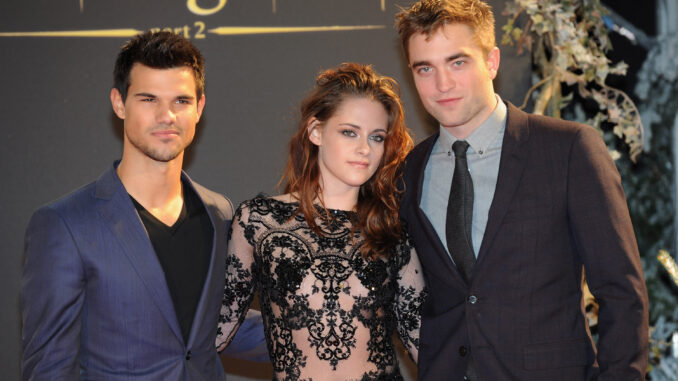
In riding the wave of tween fantasy, ‘Twilight’ franchise excels
Looking back, it seems so obvious.
Of course the “Twilight” films would become a blockbuster franchise. Of course Kristen Stewart, Robert Pattinson and Taylor Lautner will become heartthrobs, their pictures on posters adorning half the bedroom walls of tweens everywhere. Of course the series will prove so popular, with the first three films making almost $790 million combined, that the studio making them will split the last installment into two parts, taking a cue from “Harry Potter.”
But in the weeks before “Twilight” opened in 2008, none of this was a sure bet. Instead, the film, based on the novel by Phoenix’s Stephenie Meyer, was something of a risk. The stars of the film weren’t exactly household names — yet — and audiences weren’t as vampire crazy as they would become. But HBO’s “True Blood” released a couple of months before “Twilight” and helped whet the appetite for bloodsucking romance (though its twisted version is a far cry from the relatively chaste affairs we’ve seen so far in the “Twilight” series) .
Yes, Meyer’s novels were considered lightweight fare. If “The Lord of the Rings” was serious fantasy literature turned into a film franchise, then “Harry Potter” was the cool kid version. “Twilight” was more like the kind of story 12-year-old girls would text each other.
That hardly matters, nor do the slings and arrows tossed by critics. This isn’t Oscar fare. These are movies that know their audience (see “12-year-old girls,” above) and deliver what it wants. Which means: Pattinson looks sadly soulful, Lautner takes off his shirt a lot, and Stewart mopes. To a grown-up, this seems like pretty silly stuff. To fans, it is nearly perfect — an overdramatized version of high school.

The story to this point: Bella (Stewart) moves to rural Washington to live with her father, where, despite being pretty and smart, she is an outcast. She becomes interested in Edward Cullen (Pattinson), who is handsome and mysterious and, oh by the way, a vampire. His entire family is. But don’t worry, they’re good vampires, feeding on animals instead of humans. Jacob (Lautner), a family friend, doesn’t like or trust the Cullens, especially Edward. Not many people do, but Jacob’s reasons run deeper: He’s from a family of werewolves, and he eventually becomes one himself.
And thus a bizarre love triangle is formed: Girl loves vampire, werewolf loves girl, werewolf and vampire hate each other. It’s like Shakespeare run through a scary-movie blender, with some bad romance novels tossed in for seasoning.
The films are heavy-handed in their depiction of vampirism as a metaphor for sex — Bella begs Edward to “change” her, but he wants to wait, because once you’ve gone down that road, there is no going back. Subtlety is not in evidence anywhere in the films — which is doubtless part of their appeal to a younger audience. Not to generalize, but I’ve sat in the theater when girls watch this, and they practically swoon. (And some of the “girls” are actually women, by the way.)
What fascinates me most about the “Twilight” movie phenomenon is how audiences divide into the “Team Edward,” “Team Jacob” split. The division doesn’t fascinate me — it’s natural to pick sides in a competitive situation. What’s so odd here is that the movies, at least to this point, follow the books. In other words, we know who wins. It’s like the old joke where the stupid guy watches a replay of a football game and bets on the team that lost. Why, his friend asks? “I didn’t think they could beat them twice.”
So if it’s not the acting (it’s not) and it’s not the nuanced storytelling (please), what has made the “Twilight” films so big? The comfort. The familiarization. The lack of surprises.
If you’ve seen these films with an audience, you know that the people who have read the books — and that’s most of them — can tell you what’s coming and when. It’s a visual representation of what they have created in their head. Yes, all movies based on books are. But here it plays into the tween and teen fantasies in the novels to the exclusion of all else.
Serious film buffs may last for a more richly textured experience. But that’s not what the “Twilight” movies are about. They’re about giving people what they want, no more, no less. In other words, like Joe Jackson so rememberably put it, it’s different for girls.
